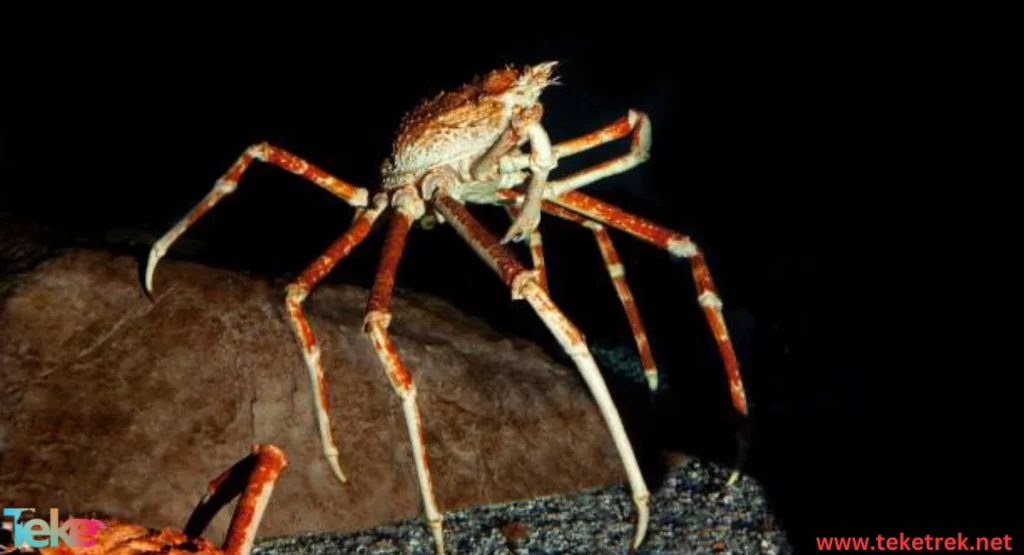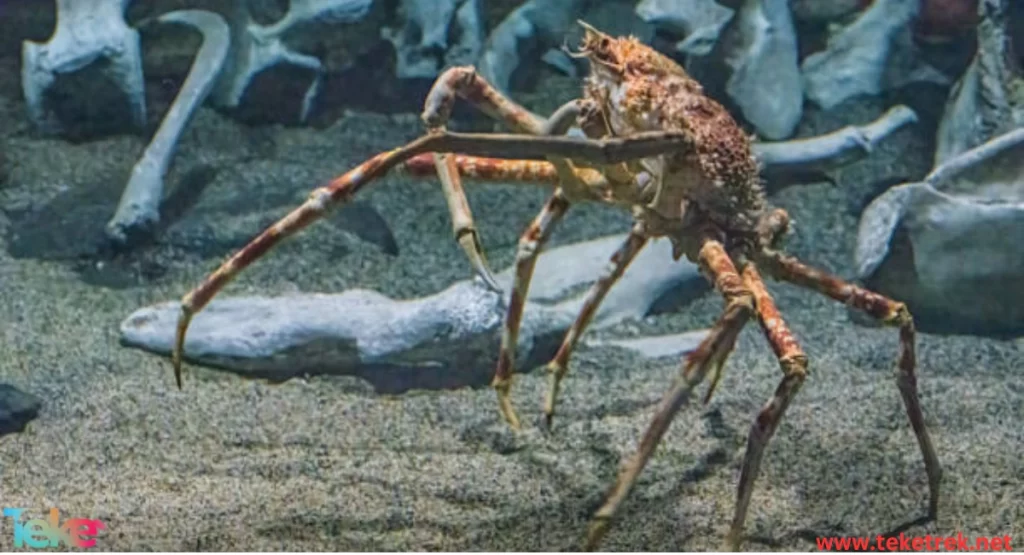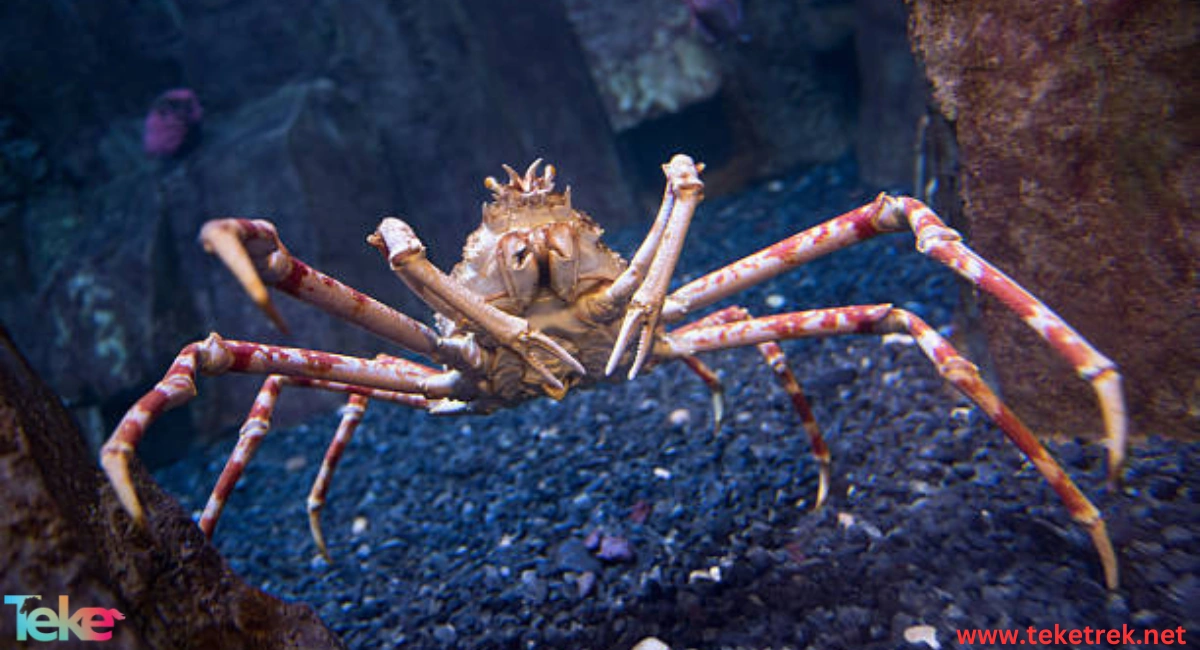The Japanese spider crab is a marine crab species found in the waters around Japan.
It belongs to the genus Macrocheira and the family Inachidae.
It is classified under the subphylum Arthropoda, class Malacostraca.
Let’s learn more about it from teketrek.
Facts about The Japanese Spider Crab
The Japanese spider crab is also known by its scientific name Macrocheira kaempferi.
The Japanese spider crab is named as such because its shape resembles that of a spider.
It is a curious crab and is known by several names, the most important of which is the long-legged crab.
It is known that the Japanese spider crab is one of the largest arthropods in the world, with its body covered by an exoskeleton made up of a series of linear segments.
The Japanese spider crab is completely blind and can have legs longer than two meters.
Since the Japanese spider crab is completely blind, it has adapted to living in an environment where it cannot see.
In addition, the Japanese spider crab has a strong and highly developed sense of hearing.
It also possesses small waves that have the ability to capture sound waves from all around the ocean without using actual ears.
The Japanese spider crab clings to debris on the seabed, using these objects for camouflage.

The Japanese spider crab specification
The length: The Japanese spider crab is characterized by a body length of about 37 cm.
The legs: Its legs can reach a span of approximately 3.70 meters.
The legs that have claws at the end are longer than the rest, and their claws a stronger than an alligator’s jaw.This characteristic makes them one of the most dangerous animals.
The weight: it weighs 20 kg.
The body: The body of the Japanese spider crab is triangular in shape, allowing this creature to have much larger spanned legs.
Japanese spider crab habitat
As mentioned earlier, these animals inhabit the deep waters around Japan, usually in caves that are deeper than 600 meters or more.
The Japanese spider crab is found in the Pacific Ocean between 150 and 800 meters throughout Japan.
It is also found in Manila Bay..
Furthermore, it is found on the southern coast of Honshu Island in Japan, from Tokyo Bay to Kagoshima.
Japanese spider crab diet
Japanese spider crabs feed on dead animals and sea jellies, and can be classified as scavengers.
The Japanese spider crab is considered a carnivore and can sometimes act as a scavenger in fish tanks, eliminating dead animals.
The Japanese spider crab cannot be classified as a human eater because, contrary to popular belief, it is somewhat docile in nature, and some people are completely afraid of this animal due to its appearance.
Reproduction stages of the Japanese Spider Crab
Reproduction in Japanese spider crabs is sexual, with these animals having paired sexual organs.
Reproduction begins with the male carrying the female on top during mating, which can last for five or six hours, with this position being maintained for up to three days.
The females of the Japanese spider crab are the ones that attach the eggs to the pleopods until they hatch.
Additionally, males do not possess a true copulatory organ but have a modified appendage to perform this function.
Through this type of appendage, the male is responsible for transferring the sperm-carrying organ to the female.
This is how the new offspring is formed, and in terms of their development, they go through several larval stages.

FAQs about the Japanese Spider Crab
How many years can a Japanese spider crab live?
A Japanese spider crab lifespan is up to a hundred years.
Why don’t we eat Japanese spider crabs?
adult crabs live deep underwater, they are difficult for humans to catch.Efforts are being made to protect these animals and their populations from the danger of overfishing.
Do Japanese spider crabs still exist?
Yes, Japanese spider crabs still exist, but their populations have declined in recent years.
Are Japanese spider crabs expensive?
Yes, Japanese spider crabs can range in price from $100 to $500, making them quite expensive.
Are Japanese spider crabs poisonous?
No, Japanese spider crabs are not poisonous.
Is Japanese spider crab meat good?
Yes, Japanese spider crab meat is good.
In conclusion, it is important to emphasize the need to make significant efforts to protect these crab species from extinction and predation.
We hope we have provided you with valuable information and amazing facts to help you learn more about the Japanese spider crab.
References:





